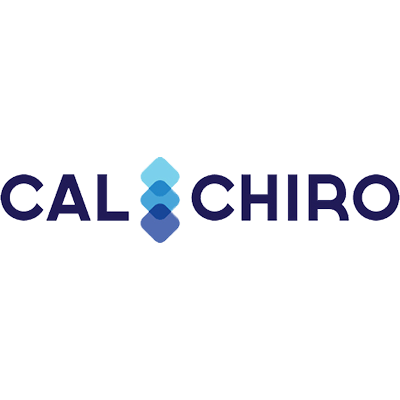Do know just how much your sleeping positions affect your everyday life? We spend one-third of our lives in bed and yet rarely take the time to actively improve our sleep postures. However, sleep posture has a tremendous impact on our overall wellness—from day-long exhaustion to waking up in pain, poor sleep hygiene can prohibit mobility, cause injury, and even diminish spinal health, which can then contribute to a myriad of immune system and health issues.
Aside from the all-too-common fatigue and neck and back pain, poor sleep posture can actually cause sleep apnea, impaired circulation, heartburn, digestive issues, and even wrinkles. It is clear how these health issues can inhibit your everyday life and happiness, causing you to forgo the activities and lifestyle you love and deserve. All due to bad sleep posture!
Symptoms of poor sleep posture include neck pain, back pain, stiffness, achiness, headaches, muscle and joint problems. All of these symptoms can linger for several days after a poor night’s sleep, but even more harmful is the heightened cause of injury when they do occur, such as a strained or pulled muscle. Compounded by the impact of poor sleep on your health in general, it is no wonder our team at Tannenbaum Chiropractic in Beverly Hills emphasizes the importance of good sleep hygiene and sleep posture.
What is Sleep Posture and Sleep Hygiene?
Sleep posture is exactly what is sounds like: the position your body remains while sleeping, which ideally should support correct alignment of the body and spine. Even while sleeping or resting, maintaining optimal neck and spinal alignment is necessary for overall wellness, a strong immune system, and is especially conducive to the natural curvature of the lower back. Many people who sleep with poor posture experience misalignment and inflammation and pain in the neck especially, though that pain can often travel all the way down the spine and into the limbs. Additionally, poor sleep posture often equates poor posture overall. While we cannot actively control our sleep posture while we sleep, we can improve sleep hygiene and sleep position awareness to begin to train our bodies into healthier habits.
Sleep hygiene encompasses not only your sleep posture, but the environment that impacts your sleep habits as a whole. Daily routines that promote good sleep, such as a positive bedroom environment, abstaining from caffeine, alcohol and junk food before bed, and a peaceful nighttime routine free of disruptions can contribute to healthy sleep hygiene and keep you conscious of your sleep positions.
The Best Sleeping Positions for Optimal Wellness
There is no one perfect sleeping position that fits everyone. More than anything, you simply want to sleep in a way that keeps your body supported in the most neutral way possible. Depending on the factors above, each sleep position may not work for you, and each have their pros and cons.
- Sleeping on your back: Often viewed as the most optimal, it is ironically also the least popular. However, sleeping on your back allows your body to rest in natural alignment with equal weight distribution (in most cases). This also means less readjustments and moving around, which equates a more restful sleep. Back-sleeping can also help reduce acid reflux, and even improve skin conditions like acne and the reduction of wrinkles. Those who may want to avoid sleeping on their backs include those who snore, who suffer from sleep apnea, who have severe chronic back pain, or who have high blood pressure.
- Sleeping on your side: This is a great alternative position to those who cannot sleep on their backs, as it reduces snoring, sleep apnea, and helps support those who suffer from arthritis and carpal tunnel. It is also said to reduce acid reflux, aid in digestion, and help with overall blood circulation. However, this comes with some downsides—side sleeping causes wrinkles, can cause restless sleep by requiring more readjusting and movement, and even can cause tingling or numbness in the limbs. Sleeping with a pillow between the legs and ensuring your arms and hands are not disrupting spinal and neck alignment may help some of these issues when side-sleeping.
- Sleeping on your stomach: While those that sleep on their stomachs swear by it, it is perhaps the worst possible sleeping position for optimal health and spinal alignment! It is impossible to keep aligned without pressure and your neck is almost always at an unnatural angle for a lengthy amount of time. Stomach sleeping also causes trouble breathing and increases signs of aging with wrinkles.
- Sleeping in the fetal position: The most popular sleep position, the benefits are similar to that of side sleeping. However, by staying crunched up for a long amount of time, your spine and limbs will feel stiff when waking and this could contribute to poor standing and sitting posture throughout the day.
Other Contributing Factors of Poor Sleep Posture
There are several factors that contribute to your natural sleep position choice. This may sound contrary to the popular belief that you gravitate towards an inherent sleep posture. We begin to naturally prefer side-sleeping in older adulthood, with right-sided sleeping being the most common. We also switch sleep positions considerably less as we age, which is both caused by and causes stiffness. Pregnant women are often encouraged to sleep on their left-side to promote circulation and blood flow to the placenta—but even non-pregnant women prefer side-sleeping and fetal positions than their male counterparts. Of course, you may or may not fall into these groups. Depending on your mattress quality, your partner’s sleep positions, or even your work schedule, when it comes down to it, your sleep posture is dependent on a cumulation of environmental factors and long-term habits.
To reduce other contributing factors, we recommend limiting pillows under your neck that may strain and misalign your spine, sleeping on a supportive mattress, using ergonomic pillows, and engaging in postural exercises before and after bed to both relax and gently waken your muscles. When sleeping on your back, a pillow under your knees, upper back, and neck can reduce pressure on your spine. If you sleep on your side, placing a supportive pillow between your knees will encourage spinal alignment by supporting your hips. A wedge pillow can also be helpful to begin forming better sleep position habits as necessary. By being mindful of the holistic nature of sleep hygiene, you can shift your sleeping habits to be more supportive of your active, healthy daily life.
Sleep Posture and Chiropractic Care in Beverly Hills
It is no secret that healthy sleep is foundational in overall wellness and optimal performance. Because one’s ideal sleep position and approach to improving their own sleep posture is so individualized, it is recommended to discuss your sleep hygiene habits and techniques to improve your sleep posture with your chiropractor. Studies have shown that chiropractic care intervention and guidance can help improve sleep posture dramatically—in fact, according to the National Sleep Foundation, nearly one-third of people who have undergone a chiropractic adjustment say they experience an immediate improvement in sleep.
At Tannenbaum Chiropractic in Beverly Hills, we want you to be rested, pain-free, and participate in your favorite activities, in and out of our wellness office.
Are you experiencing restless sleep or back pain, stiffness, and/or achiness due to poor sleeping habits? Call Tannenbaum Chiropractic today to discuss how your sleep posture can help maintain spinal health and overall wellness!




